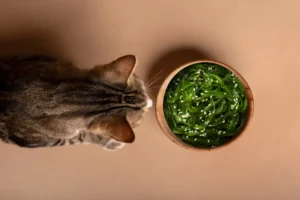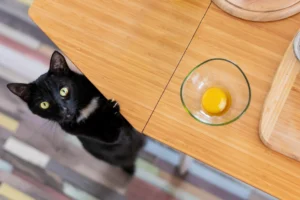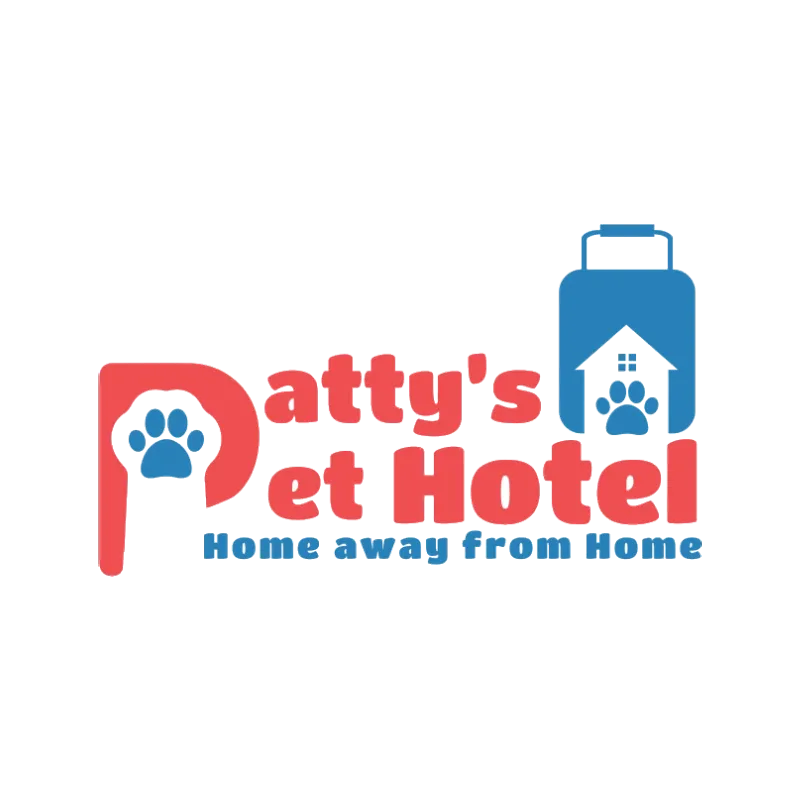Feeding our pets right goes beyond what we put in their bowls but also how we place their bowls.
Typically we would place their food and water bowls on the ground which creates a distance between their mouths and the food. As a result, our pets would have to stretch their necks further and gulp their food in order to get it to their throats prior to swallowing.
This potentially raises the risks of choking, regurgitation and reflux, especially in pets with weak esophageal muscles. Hence some vets would recommend an elevated pet bowl to reduce said risks.
An elevated pet bowl is basically a stand that holds your pets food and water bowl a few inches above ground level. Typically it has a hole for the bowls to sit comfortably in and prevent it from tipping over.
Benefits Of Using An Elevated Pet Bowl
1. It promotes feeding area hygiene and cleanliness.
As the bowls sit snugly on the platform, it prevents dogs and cats from pushing around their bowls or sitting in them. The reduced spillage would decrease the moisture that may get under the dishes, thus decreasing the areas for mold and bacteria to collect and grow.
Other than that, elevated food bowls don’t slide across the floor when your pet is trying to eat. So for pets who tend to move their bowls around while they’re eating, having the bowl elevated in a fixed position will help to prevent this.
With the extra height, it’s also helps to prevent some dirt, fur and dust particles from getting into your pet’s food and water. Of course, you still have to change the water daily, but the elevation may keep it cleaner throughout the day too.
2. It makes eating and drinking easier for dogs and cats.
Especially for larger and medium dogs, eating or drinking from a bowl at floor level requires them to strain their necks which can be uncomfortable and even harmful.
Think of it as though we’re having to eat a meal while sitting at a table built for kids. In the same way, serving food in a raised bowl for large dogs is akin to us eating at a table built for adults.
Other than that, it’s also beneficial for pets with:
- Stiff muscles or sore joints, particularly for dogs or cats with shoulder or back problems, such as intervertebral disc disease
- Post-operative mobility restrictions
- Arthritis
With the extra height, your pet wouldn’t have to struggle to reach their food thus making meal time more enjoyable for them.
3. It aids pets with swallowing or digestive difficulties.
Elevated bowls could be particularly helpful for dogs and cats with a condition called megaesophagus. This is a condition whereby the esophagus is enlarged causing the muscles to be weak and flaccid.
As a result, the esophagus is unable to safely propagate the food down to the stomach through muscular contractions. The food instead accumulates and places your pet at risk for aspiration pneumonia or vomiting and reflux.
Hence, an elevated bowl will allow your pet to swallow with the aid of gravity to get the food down to their stomach.
4. It prevents pets from lying down while eating.
If your pets are lying down while eating, it’s not because they’re lazy (although that could be sometimes a factor).
It could however be due to discomfort when they bend their neck down to eat so lying down makes it easier for them to reach the food.
The problem here is that lying down while eating could lead to digestive issues. Elevated bowls in this case would help to keep your pet standing, and this will allow the food to move down your pet’s disgestive tract properly.
Cons Of Using An Elevated Pet Bowl
This topic has had its fair share of controversy over the years due to the occurrence of bloating in pets. It was originally recommended as a solution to bloating but in some cases it actually caused the condition called gastric dilation volvulus.
Bloating in dogs, especially larger canines, is a deadly condition in which blockages, gas and/or stress can combine to cause their stomachs to twist or flip over. This then painfully shuts off both entry and exit points of the stomach causing a decrease in blood flow and the inability to pass gas or stomach contents.
In the worst cases, it rapidly progresses to shock and death if life-saving medical intervention is not carried out.
Therefore it is highly recommended to check with your vet on the risk factors of bloating in your furkid first before deciding.
Choosing A Suitable Pet Bowl
Now that you’re aware of the pros and cons (and have hopefully checked their risk factors), a pet bowl is meant to position the food and water bowl at a comfortable height for your pet.
For cats: The bowl should be at the height of your cats front legs. Most adult cats are averagely 20-25cm tall, therefore the bowl should be approximately at 10-15cm in height.
For dogs: Measure your standing dog from the floor under the front paws up to the top of their shoulders, then subtract approximately 15cm from the measurement.
Ideally your pet should be able to eat comfortably without lowering their necks or stretching them upwards.
Here’s a visual guide that may help you convert the sizes:

-//-
With a comfortable eating position, your pets’ mealtime would be more enjoyable and therefore allowing them to consume the required nutrients.
Speaking of a happy and healthy pet, fresh cooked food is something that you can consider for your pets too. Not only does it not contain fillers, it also reduces the occurrence of constipation as it has the right amount of fibre and moisture for smooth poops.
If you would like to have your furkid try fresh human-grade meals, our Petchef Advisors are available to advise you on the most suitable menu for your pet.
Feature Image Credit: behance.net











